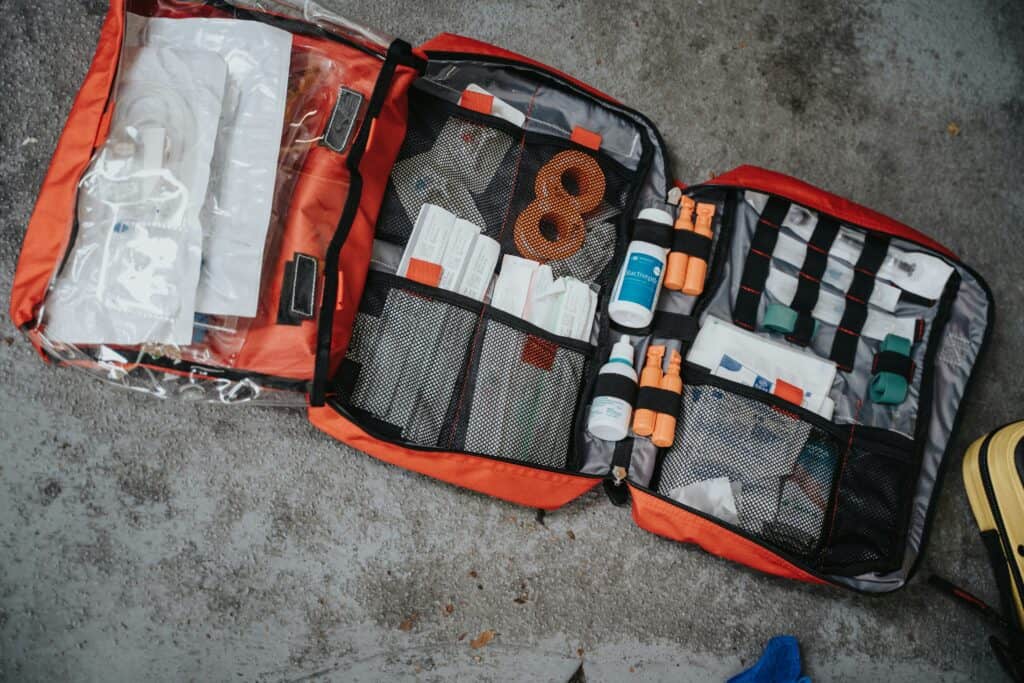In today’s world, it’s more important than ever to be aware of potential threats and dangers that may be lurking around us. A component of this is being aware and able to recognize pre-assault indicators. Pre-assault indicators are the key to understanding these threats and taking preventative or de-escalatory action.
Being able to identify suspicious behavior and body language is an invaluable skill. A deeper understanding of these cues can help us recognize when someone may be preparing for an aggressive action or attempting to conceal malicious intent. In some cases, we might even be able to intervene and de-escalate a potentially dangerous situation before it escalates.
Developing these skills isn’t just about understanding others’ actions, but also about refining our own responses. By practicing self-awareness, empathy, and assertiveness, we can better navigate tense situations and communicate with others in a way that reduces the likelihood of harm. As we improve our ability to discern these indicators, we become better equipped to avoid or mitigate potential dangers.
Pre-Assault Indicators
Understanding the Signs of Potential Danger
We often encounter situations where identifying pre-assault indicators can be crucial in avoiding or de-escalating potential danger. These signs can include body language, facial expressions, and specific movements that may signal hostile intent. By being aware of these warning signs, we can better prepare ourselves to respond effectively and mitigate the potential risk of violence.
Warning signs may include clenched fists, raised voices, spitting, stretching, or scanning the surroundings with a focused or nervous gaze. These behaviors can signal impending violence, and being able to recognize them can help us take appropriate action.
Warning Signs of an Imminent Assault
There are several key indicators that an assault may be impending, such as:
- Clenching: A person may clench their hands, jaw muscle, or eyes, signaling anger or aggression.
- Target glance: A glance toward potential targets, such as exits or intended victims, may indicate a pending attack.
- Flanking: Attempting to circle around a person or position oneself strategically can suggest hostile intent.
- Posturing: Puffing out the chest, raising the chin, or displaying a stiff posture may be attempts to communicate dominance, and in some cases, signal a potential assault.
Being aware of these signs can help us react appropriately, increasing our chances of avoiding a dangerous situation.
Posture and Body Language Indicators
Pre-assault indicators often involve specific body language and posturing. These can include:
- Bladed stance: A fighting stance that positions the body’s side toward a potential target, possibly indicating aggressive intentions.
- Defensive posture: Raising arms, crossing arms in front of the body, or holding hands up defensively can signal wariness or fear.
- Thousand-yard stare: A fixed, vacant gaze directed at an indeterminate point, potentially signaling an adrenaline surge or a state of heightened alertness.
- Facial expressions: Contempt, anger, or nervousness in a person’s facial expressions can give insight into their emotional state and possibly indicate impending aggression.
By recognizing these signals and being aware of potential danger, we can better prepare ourselves to respond to violent situations and take actions to avoid or de-escalate conflicts.
Protecting Yourself and Others

Awareness and Prevention Techniques
As responsible citizens, it is important for us to be aware of pre-assault indicators and potential threats and take preventive measures to protect ourselves and others. We can do this by paying attention to body language and suspicious behavior, which are often indicators of danger. By developing our observational skills, we can quickly identify potential threats and respond accordingly.
It is also important to be aware of our surroundings and to scan the area for any unusual activity. This is especially important when we are out in public or in potentially dangerous areas. We should also maintain a safe distance from suspicious individuals, which will give us enough time to react if necessary.
As citizens, it’s crucial to remain aware of possible criminal activity and high-risk areas in our neighborhoods and the areas we travel. This can help us recognize potential dangers and take precautionary measures. We can stay informed about the latest developments by accessing reliable sources of information and regularly educating ourselves on safety procedures and strategies for handling violent crime scenarios.
De-escalation Strategies
When responding to a potential conflict, utilizing de-escalation strategies can be very beneficial in preventing violent outcomes. Here are some tactics we can apply to de-escalate a potentially dangerous situation:
- Maintain a calm demeanor: By staying calm and composed, we can project an aura of confidence that may alleviate tension and prevent aggression.
- Use active listening skills: By attentively hearing what the individual has to say, we acknowledge their concerns, which can lead to a better understanding of their motives and intentions.
- Empathy: Put ourselves in their shoes and try to understand their point of view. This can help build rapport and resolve confrontations peacefully.
- Communication: Speaking in a clear, respectful tone and using non-authoritative language can also contribute to lowering the intensity of a conflict.
Remember, every situation is unique, and it’s essential to adapt our strategies accordingly. Nevertheless, incorporating these awareness and prevention techniques, along with de-escalation strategies, can make a significant difference in ensuring our safety.
Managing Fear and Anxiety
Recognizing Psychological Responses
When faced with potential danger or threatening situations, it’s common for us to experience fear and anxiety. These emotions can manifest in various ways, such as increased heart rate, rapid breathing, and the activation of the flight or fight response. Understanding the signs of potential danger and identifying suspicious behavior and body language can help us better manage these feelings.
Nervousness and fear are natural responses to potentially dangerous situations. However, it’s essential for us to recognize the difference between a healthy level of concern and excessive anxiety. Experiencing some fear is useful, as it can increase our awareness and receptiveness to potential threats. On the other hand, excessive anxiety may hinder our ability to think clearly and make informed decisions.
Effective Coping Mechanisms
To effectively manage fear and anxiety, we can adopt various coping mechanisms. First and foremost, it’s crucial to acknowledge and accept our emotions, rather than suppressing or denying them. Doing so will allow us to better understand our reactions and develop appropriate strategies to handle them.
One practical approach is to practice deep breathing exercises, which can help us regain control over our physical and psychological responses. Slow, deliberate breaths can help alleviate feelings of nervousness and anxiety, bringing our attention back to the present moment.
Another effective strategy is to develop our skills in identifying pre-assault indicators and understanding potential dangers. Through training and experience, we can learn to recognize the signs of suspicious behavior, body language, and potential threats. In doing so, we gain confidence in our ability to identify risks and better prepare ourselves for any situation that may arise.
Additionally, mastering the art of de-escalation is crucial in avoiding or resolving potentially dangerous situations. Utilize clear communication, maintain a non-threatening demeanor, and remain calm to try and reduce potential hostility.
Recognizing the psychological responses of fear and anxiety and implementing effective coping mechanisms can help foster confidence and a level-headed approach. Developing these skills enables us to make better decisions in potentially dangerous situations, ensuring our safety not only for ourselves but for those around us.
Post-incident Actions
Reporting to Law Enforcement
After experiencing a potentially dangerous situation, it’s crucial for us to report the incident to law enforcement. When reporting, it’s important to provide accurate details about the incident and the people involved, such as their physical appearance, clothing, location, and any other relevant information.
Applying Knowledge to Real-world Scenarios
Practical Examples
In our daily lives, we may come across situations that require us to be vigilant and aware of potential dangers. Understanding pre-assault indicators, such as the suspicious behavior and body language of individuals around us, is crucial to avoid or de-escalate potentially dangerous situations.
As mentioned above, we can identify potential warning signs of impending violence by paying close attention to the following aspects:
- Body language: Look for tense or exaggerated movements, clenched fists, glaring eyes, or a person invading personal space.
- Posture: Be aware of individuals with a rigid or aggressive stance, as this can indicate mounting anger or hostility.
- Gestures: Sweeping, sudden, or aggressive gestures can be a precursor to violent actions.
- Facial expressions: Watch for signs of anger or contempt, such as a furrowed brow, curled lips, or a snarl.
- Nervous behaviors: Grooming, fidgeting, or other signs of nervousness can sometimes indicate an individual is preparing to commit a criminal act.
- Leakage: Subtle, unintentional expressions of emotion or intent (such as a slight smile or muscle twitch) can reveal an individual’s true intentions. This can also apply to social media leakage as well.
By recognizing these signs early, we can develop and increase our awareness of potentially dangerous situations. It’s essential to stay calm and prepare for possible outcomes, whether it’s the need for defensive action, flight, or negotiation.
Final Thoughts
We believe that understanding pre-assault indicators is crucial in recognizing potential danger. By being aware of these signs, we can better assess our surroundings and identify suspicious behavior and body language. This knowledge allows us to proactively address potential threats and keep ourselves safe.
Developing skills to avoid or de-escalate a potentially dangerous situation is essential. Prevention and de-escalation techniques, such as maintaining a safe distance, adopting a non-threatening posture, and using assertive but non-aggressive language, can go a long way in preventing harmful outcomes. In addition, situational awareness and empathy can help us appreciate others’ perspectives and alleviate tense situations.
We want to emphasize the significance of acquiring and honing these skills through persistent learning and practice. Participating in events like situational awareness and pre-assault indicator training, and keeping up with relevant literature, can aid in improving our comprehension and proficiency in managing potentially hazardous circumstances.
Take the first step towards ensuring your safety by contacting us for situational awareness and pre-assault indicator training. Learn how to identify potential danger, adopt non-threatening postures, and use assertive but non-aggressive language to prevent and de-escalate potentially harmful situations. Our instructors will equip you with the necessary skills and knowledge to keep yourself and others safe. Contact us today to schedule your training session!








